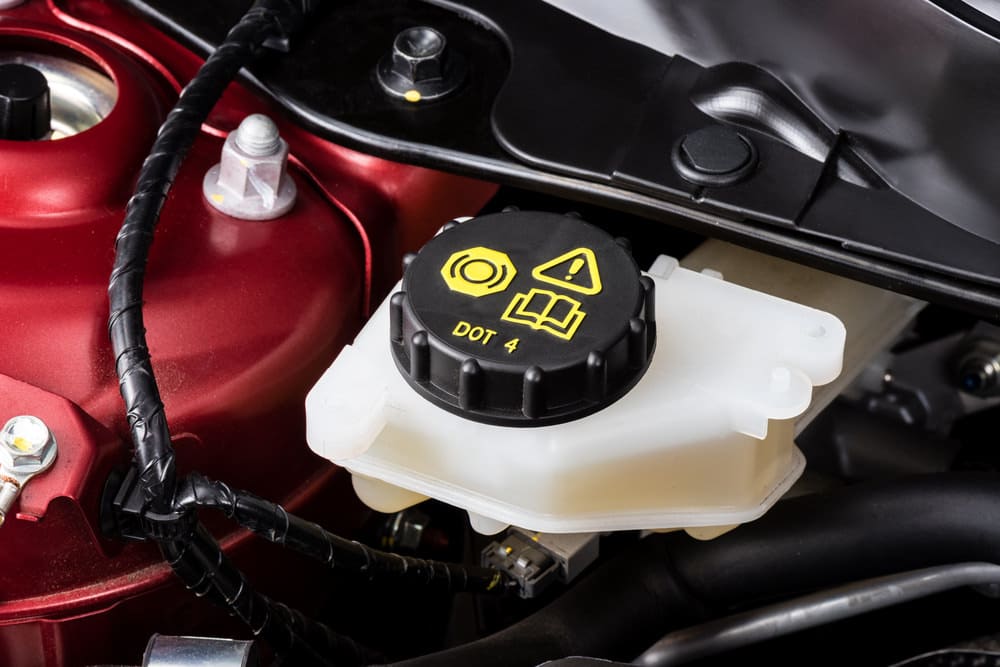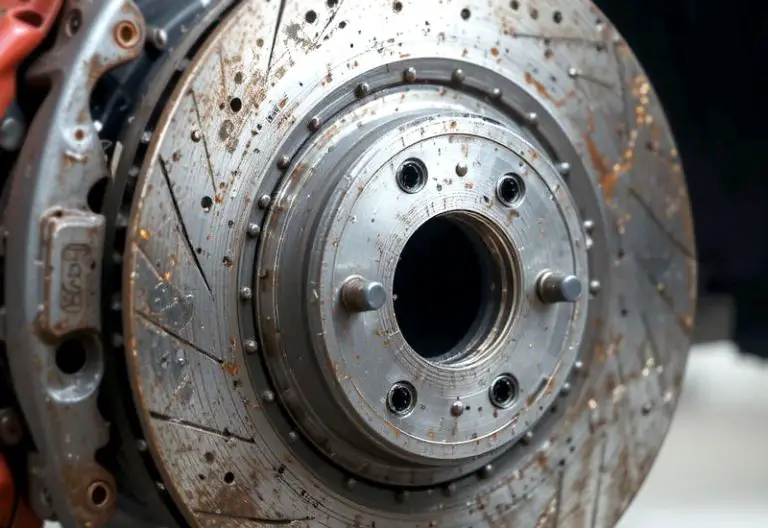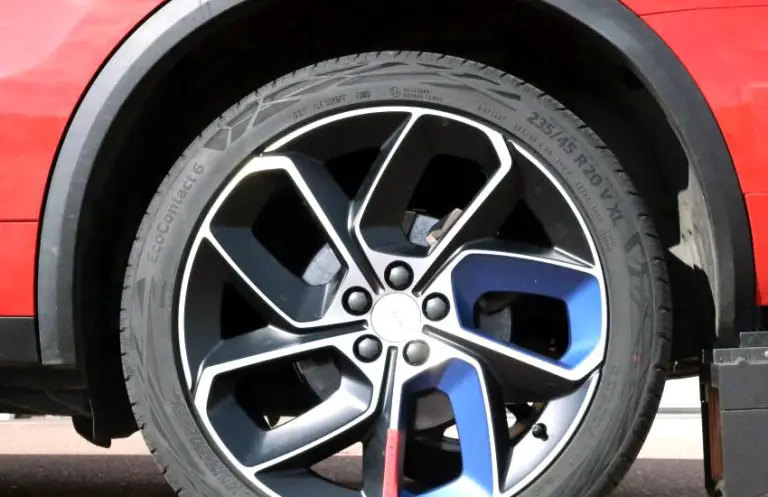Yes, brake fluid circulates within the braking system, transferring force from the brake pedal to the brake components. This fluid is crucial for the proper functioning of the brakes, as it facilitates the movement of hydraulic forces throughout the system.
Brake fluid is designed to withstand high temperatures and pressures to ensure efficient braking performance. Without the circulation of brake fluid, the braking system would not be able to generate the force necessary to stop a vehicle effectively. Regular maintenance and checks on the brake fluid level and condition are essential to ensure the safety and proper functionality of the braking system.

Credit: www.hoehnhondacarlsbad.com
How Brake Fluid Works
The proper functioning of a vehicle’s braking system is crucial for the safety of both the driver and passengers. One essential component of this system is the brake fluid, which plays a vital role in enabling the vehicle to effectively slow down or come to a complete stop. Understanding the functionality and characteristics of brake fluid is essential for maintaining the optimal performance of a vehicle’s braking system.
Brake Fluid Functionality
The functionality of brake fluid lies in its ability to transmit the force created by the driver pressing the brake pedal to the brake components located at the wheels of the vehicle. When the brake pedal is depressed, brake fluid is pushed through the brake lines to the individual brakes, exerting pressure on the brake pads or shoes. This pressure then brings the vehicle to a stop by creating the necessary friction to immobilize the wheels.
Brake Fluid Characteristics
Brake fluid is designed to withstand high temperatures, particularly in the context of heavy braking or when driving in hilly areas. This characteristic is crucial as it prevents the brake fluid from boiling and losing its effectiveness. Moreover, brake fluid must also possess anti-corrosive properties to protect the metal components within the braking system. Additionally, it needs to be non-compressible to ensure that the force exerted on the brake pedal is efficiently transferred to the brakes.
Components Of The Braking System
The braking system in a vehicle is a complex network of components that work together to provide safe and efficient stopping power. Understanding these components is essential for any vehicle owner or enthusiast. In this article, we will explore the key components of the braking system, including the master cylinder, brake lines and hoses, and brake calipers and wheel cylinders.
Master Cylinder
The master cylinder is a critical component of the braking system. It is responsible for converting the pressure applied to the brake pedal into hydraulic pressure that is used to operate the brakes. Located in the engine compartment, the master cylinder contains a reservoir for brake fluid. When the brake pedal is depressed, a piston inside the master cylinder is activated, forcing brake fluid through the brake lines and hoses towards the wheels.
Brake Lines And Hoses
Connecting the master cylinder to the wheel brakes are the brake lines and hoses. These components are responsible for transporting brake fluid from the master cylinder to the brake calipers or wheel cylinders. Brake lines are typically made of steel and are designed to withstand high pressures. Brake hoses, on the other hand, are flexible and allow for the movement of the wheels. It is important to regularly inspect these components for any signs of damage or leaks, as any impairment could lead to a loss of braking power.
Brake Calipers And Wheel Cylinders
At each wheel, the brake calipers or wheel cylinders play a crucial role in the braking system. These components position the brake pads or shoes in close proximity to the brake discs or drums. When the hydraulic pressure is applied, brake calipers clamp the brake pads onto the rotating disc, creating friction that slows down the vehicle. Wheel cylinders, on the other hand, push the brake shoes against the inside of the brake drums. Both brake calipers and wheel cylinders utilize pistons that are actuated by the hydraulic pressure, resulting in the braking force needed to stop the vehicle.
Role Of Brake Fluid In The Braking System
`Brake fluid plays a crucial role in the braking system by transmitting force and dissipating heat effectively.
Transmission Of Force
Brake fluid transmits force generated by pressing the brake pedal to the brake components.
Heat Dissipation
Brake fluid helps dissipate heat generated during braking to prevent overheating.

Credit: tiremaxx.com
Brake Fluid Circulation Process
Brake fluid in a vehicle’s braking system plays a crucial role in ensuring proper functionality and safety.
Pressing The Brake Pedal
When the brake pedal is pressed, the brake fluid is put into motion within the braking system.
Hydraulic Pressure Transfer
The pressure from pressing the brake pedal is transferred through the brake fluid, creating hydraulic force.
Effects Of Inadequate Brake Fluid Circulation
Proper brake fluid circulation is crucial for the overall functioning of your vehicle’s braking system. Inadequate circulation, on the other hand, can lead to a range of issues that compromise brake performance and may even cause damage to important components.
Brake Performance Impairment
Inadequate brake fluid circulation can significantly impair the performance of your vehicle’s brakes. The brake fluid plays a critical role in transferring the force applied on the brake pedal to the brake calipers, resulting in the necessary friction needed to stop the vehicle. When the circulation is inadequate, the efficiency of this force transfer is reduced, leading to diminished braking power.
Without sufficient brake fluid circulating through the system, the brakes may feel spongy or unresponsive. This can increase the stopping distance and make it harder to come to a complete stop, posing a safety risk for both the driver and other road users.
Additionally, inadequate brake fluid circulation can result in the brake pedal sinking to the floor when pressed, making it difficult to maintain consistent pressure or modulate the braking force effectively. This can further compromise the ability to control the vehicle and respond quickly to emergency situations.
In summary, impaired brake performance due to insufficient brake fluid circulation can lead to longer braking distances and reduced control over the vehicle, increasing the risk of accidents.
Potential Damage To Components
Inadequate brake fluid circulation can also result in potential damage to various components within the braking system. The high temperatures generated during braking can cause the brake fluid to break down over time, becoming less effective in its role.
If the circulation is inadequate, the brake fluid may stay in contact with the brake components for longer periods, leading to an increased risk of corrosion. The corrosive action of the brake fluid can damage crucial parts such as brake lines, cylinders, and calipers, compromising their integrity and potentially causing leaks.
Furthermore, the lack of sufficient brake fluid circulation can cause increased friction and heat buildup in the brake system. This can put excessive strain on the brake pads, leading to premature wear and potentially resulting in costly repairs or replacements.
Overall, it is essential to maintain adequate brake fluid circulation to prevent potential damage to critical components in the braking system, ensuring optimal performance and prolonging the longevity of your vehicle’s brakes.
Importance Of Regular Brake Fluid Maintenance
The braking system of a vehicle is one of the most critical components for safe driving. Regular maintenance of brake fluid is essential to ensure its proper functioning, as it plays a crucial role in the system’s overall performance. Proper brake fluid maintenance is integral to preventing brake failure and enhancing safety on the road.
Prevention Of Brake Failure
Regular brake fluid maintenance is pivotal in preventing brake failure, which can be catastrophic while driving. Over time, brake fluid can absorb moisture and become contaminated, leading to a decline in its boiling point. This, in turn, can cause vapor lock or brake fluid boiling, ultimately decreasing braking efficiency. By ensuring regular checks and changes of the brake fluid, the risk of brake failure due to moisture absorption or contamination can be significantly minimized.
Enhanced Safety
Regular maintenance of brake fluid contributes to enhanced safety on the road. Contaminated or old brake fluid can lead to a spongy brake pedal, reduced braking performance, or even total brake system failure. By maintaining the proper level and quality of brake fluid, the braking system’s efficiency and responsiveness are preserved, allowing for a safer driving experience for both the driver and other road users.
Signs Of Brake Fluid Circulation Issues
Brake Fluid Leakage
Brake fluid leakage is a common sign of circulation issues. Look for puddles or wet spots under the car, near the wheels, as this indicates a potential leak in the system.
Spongy Brake Pedal
A spongy brake pedal is another indication of brake fluid circulation problems. If you notice the brake pedal feels soft or spongy when pressed, it could be due to air in the brake lines or a brake fluid leak.

Credit: www.yourmechanic.com
Conclusion
Brake fluid plays a crucial role in the functioning of the braking system. It circulates through the system, transmitting force and ensuring responsive braking. Understanding how brake fluid works can help vehicle owners maintain their braking systems effectively. Regular inspections and timely fluid replacements are essential to ensure optimal performance and safety on the road.
Stay informed and take care of your brakes for a smoother and more efficient driving experience.


